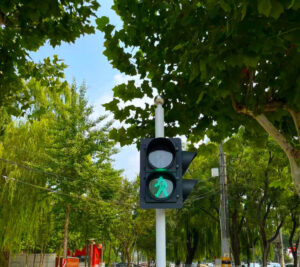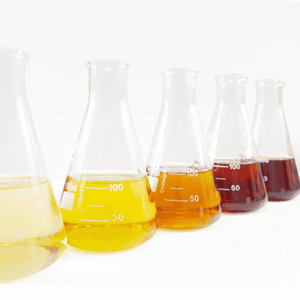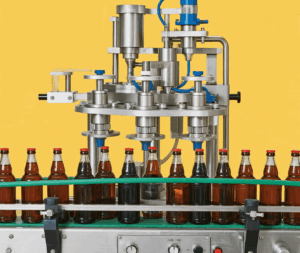Stop lights are fundamental traffic control devices in urban environments, responsible for regulating vehicle flow and ensuring the safety of all road users. While they traditionally focus on managing motor vehicle movement, it is increasingly clear that pedestrians and cyclists—who represent some of the most vulnerable groups on the road—require greater attention in stop light design.
According to the World Health Organization, over 270,000 pedestrians and cyclists worldwide lose their lives annually in traffic accidents, making it imperative to optimize stop light systems to better protect these road users. By addressing their unique needs, cities can enhance safety and promote more sustainable, active transportation modes.
Table of Contents
ToggleExtending Stop Light Crossing Time and Implementing Early Release Signals
- Longer Green Light Duration for Pedestrians and Cyclists
Many intersections currently allocate only 4 to 6 seconds of green light time for pedestrians, which is insufficient for elderly individuals, people with disabilities, or those accompanied by children. Research indicates that a typical pedestrian requires roughly 1.2 meters per second to cross safely, meaning a standard 12-meter-wide road demands at least 10 seconds for safe crossing. By extending green light durations by 30-50%, cities can reduce hurried crossings and lower accident risk significantly. For cyclists, especially those with slower speeds or towing cargo, additional crossing time reduces the temptation to run red lights and increases compliance. - Early Release Signals (Leading Pedestrian Interval, LPI / Leading Cyclist Interval, LCI)
Early release signals grant pedestrians and cyclists a 3 to 7-second head start before motor vehicles receive a green light. This strategy increases the visibility of non-motorized users, allowing them to establish presence in the crosswalk and making turning vehicles more aware. Studies have shown that implementing LPI/LCI can reduce pedestrian-vehicle collisions by as much as 60%. Furthermore, early release intervals improve driver reaction time and promote a more predictable crossing environment. - All-Walk Signal Phases (Pedestrian Scrambles)
At busy urban intersections with high pedestrian volumes, an “all-walk” or “pedestrian scramble” phase allows pedestrians to cross in all directions simultaneously while all vehicle traffic is stopped. This reduces the potential for conflict between turning vehicles and crossing pedestrians, cutting pedestrian-vehicle collisions by over 50%. Though some worry about vehicle delays, data suggests that these phases can be integrated efficiently without significant negative impacts on traffic flow, especially when coordinated with smart traffic management systems.
Smart Stop Lights with Sensors and Dynamic Timing

Traditional stop lights often operate on pre-set fixed timing cycles, typically ranging from 60 to 120 seconds. Such rigid systems do not adapt well to fluctuating traffic volumes or sudden surges in pedestrian or cyclist presence. By equipping intersections with advanced sensors—such as infrared detectors, pressure plates, or video analytics—stop lights can dynamically adjust green light durations in real time. This responsiveness can reduce pedestrian and cyclist wait times by 20-40%, improving user satisfaction and compliance.
Moreover, integrating cameras and artificial intelligence to monitor intersection behavior enhances enforcement capabilities. Red-light running accounts for approximately 30% of urban crashes involving vulnerable road users. Real-time detection and warning systems can deter risky behaviors, alert drivers, and provide data for future safety improvements. Some cities have also experimented with connected vehicle technologies that communicate stop light status directly to drivers and cyclists, further increasing situational awareness.
Enhanced Visual and Auditory Aids and Integration of Stop Lights with Slow Traffic Infrastructure
- Visual and Auditory Assistance Devices
Vulnerable groups such as the elderly, children, and visually impaired pedestrians require specialized signal aids to navigate intersections safely. Incorporating high-intensity LED lights ensures signals are clearly visible in all lighting conditions. Ground-level projections of crosswalk signals help those who cannot look upwards easily, while audible cues and tactile vibrating pushbuttons assist visually impaired users in safely timing their crossings. Studies have found that these assistive features can improve signal comprehension by up to 80%, significantly reducing the likelihood of unsafe crossings. - Integration with Slow Traffic Facilities
Effective stop light optimization must be part of a broader strategy that includes well-designed slow traffic infrastructure. This involves planning wide, continuous bike lanes (ideally at least 1.5 meters wide), accessible sidewalks, and buffer zones that separate pedestrians and cyclists from vehicle lanes. Such infrastructure provides safe and comfortable waiting areas at intersections, reducing the risk of conflicts and encouraging more people to choose walking or cycling. Research indicates that combining optimized stop lights with high-quality slow traffic facilities can reduce pedestrian-vehicle conflicts by 25-35%, creating a safer, more inviting urban environment.
Conclusion
In summary, a modern, human-centered stop light system serves not only as a tool to regulate vehicle flow but as a vital safeguard for pedestrians and cyclists. By extending crossing times by 30-50%, implementing early release signals proven to reduce collisions by up to 60%, leveraging smart sensors to adapt dynamically to real-time traffic conditions, and providing inclusive visual and auditory assistance, stop lights can dramatically enhance safety for vulnerable road users. Coupled with thoughtful slow traffic infrastructure, these improvements support healthier, safer, and more livable cities, promoting active transportation and reducing traffic-related injuries and fatalities.
0



